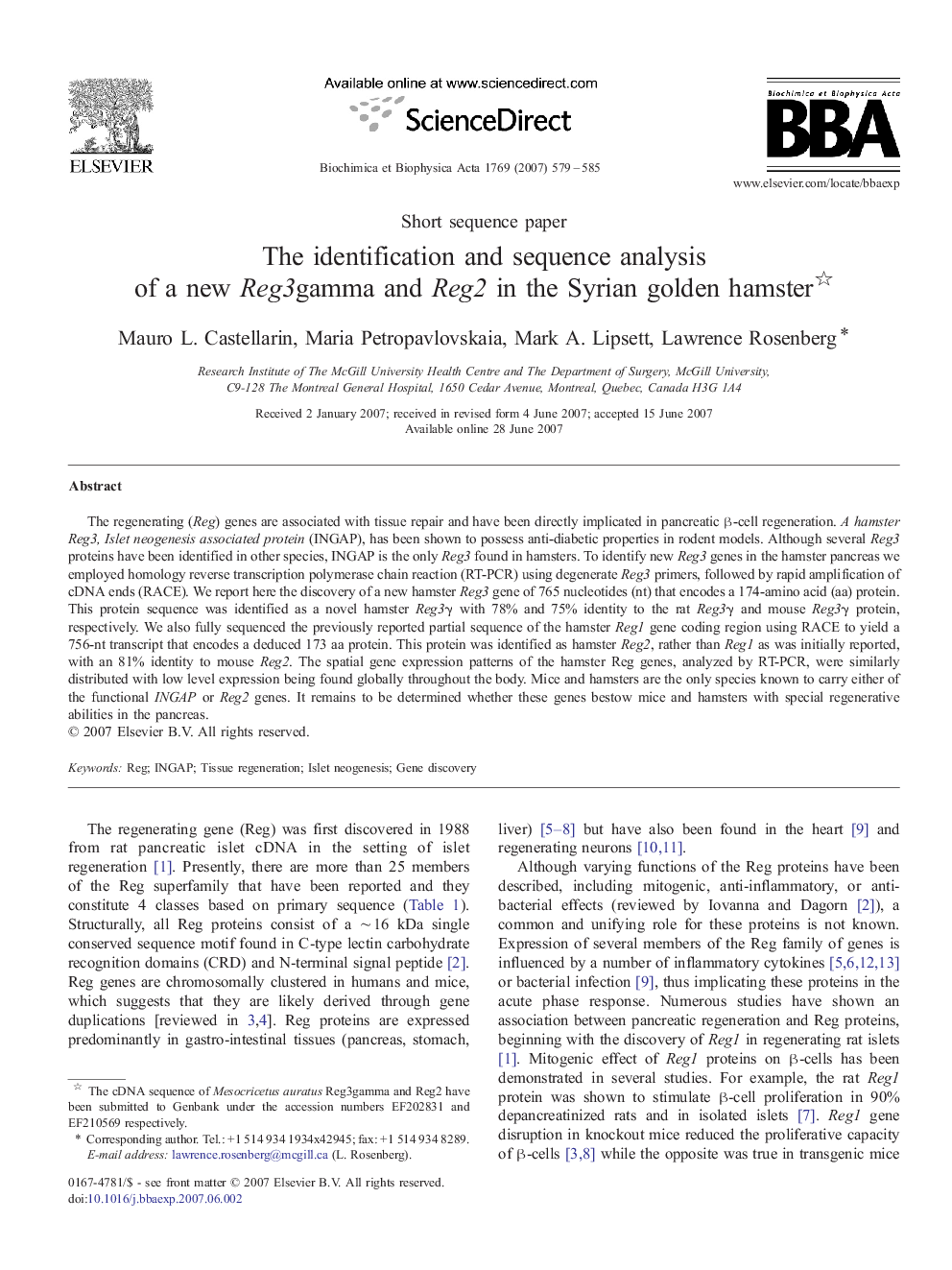| Article ID | Journal | Published Year | Pages | File Type |
|---|---|---|---|---|
| 1947143 | Biochimica et Biophysica Acta (BBA) - Gene Structure and Expression | 2007 | 7 Pages |
The regenerating (Reg) genes are associated with tissue repair and have been directly implicated in pancreatic β-cell regeneration. A hamster Reg3, Islet neogenesis associated protein (INGAP), has been shown to possess anti-diabetic properties in rodent models. Although several Reg3 proteins have been identified in other species, INGAP is the only Reg3 found in hamsters. To identify new Reg3 genes in the hamster pancreas we employed homology reverse transcription polymerase chain reaction (RT-PCR) using degenerate Reg3 primers, followed by rapid amplification of cDNA ends (RACE). We report here the discovery of a new hamster Reg3 gene of 765 nucleotides (nt) that encodes a 174-amino acid (aa) protein. This protein sequence was identified as a novel hamster Reg3γ with 78% and 75% identity to the rat Reg3γ and mouse Reg3γ protein, respectively. We also fully sequenced the previously reported partial sequence of the hamster Reg1 gene coding region using RACE to yield a 756-nt transcript that encodes a deduced 173 aa protein. This protein was identified as hamster Reg2, rather than Reg1 as was initially reported, with an 81% identity to mouse Reg2. The spatial gene expression patterns of the hamster Reg genes, analyzed by RT-PCR, were similarly distributed with low level expression being found globally throughout the body. Mice and hamsters are the only species known to carry either of the functional INGAP or Reg2 genes. It remains to be determined whether these genes bestow mice and hamsters with special regenerative abilities in the pancreas.
